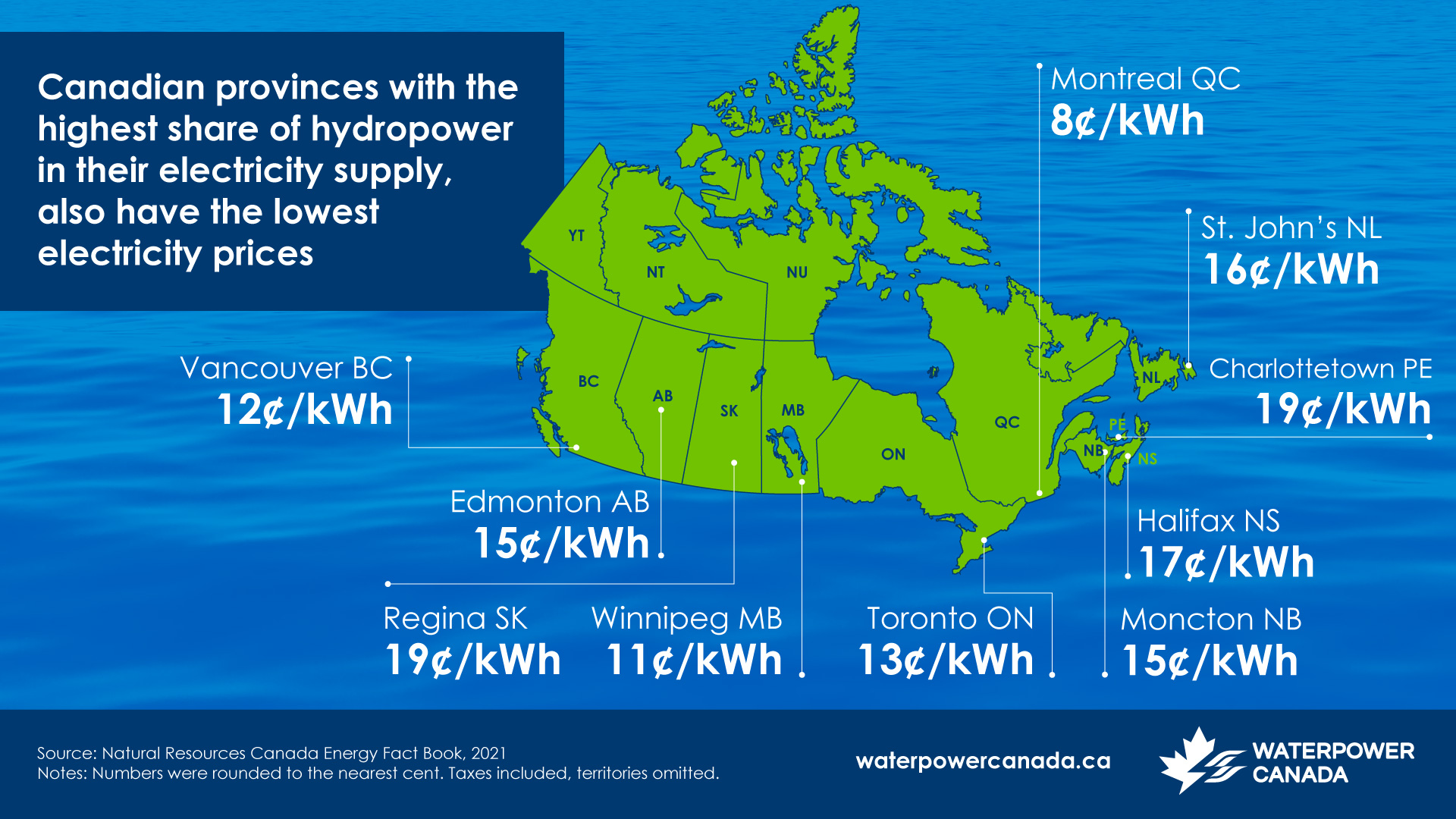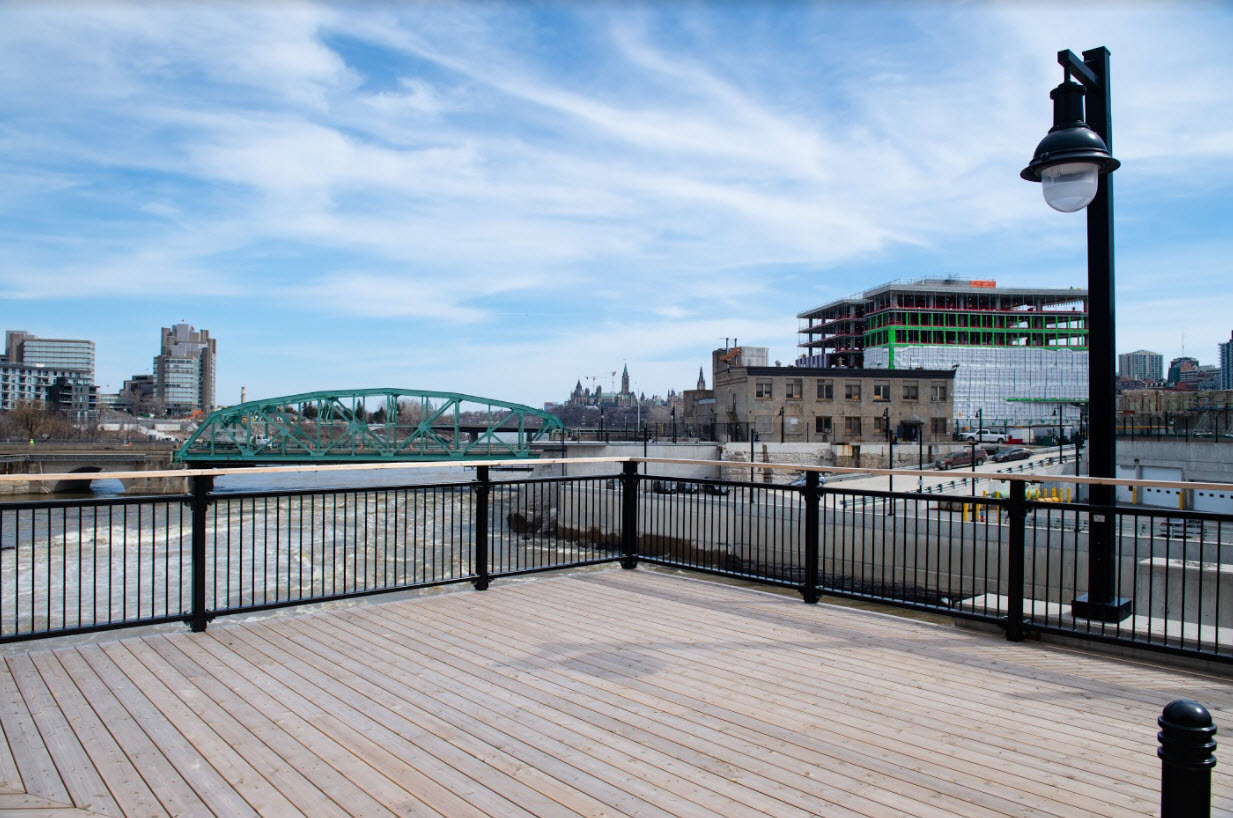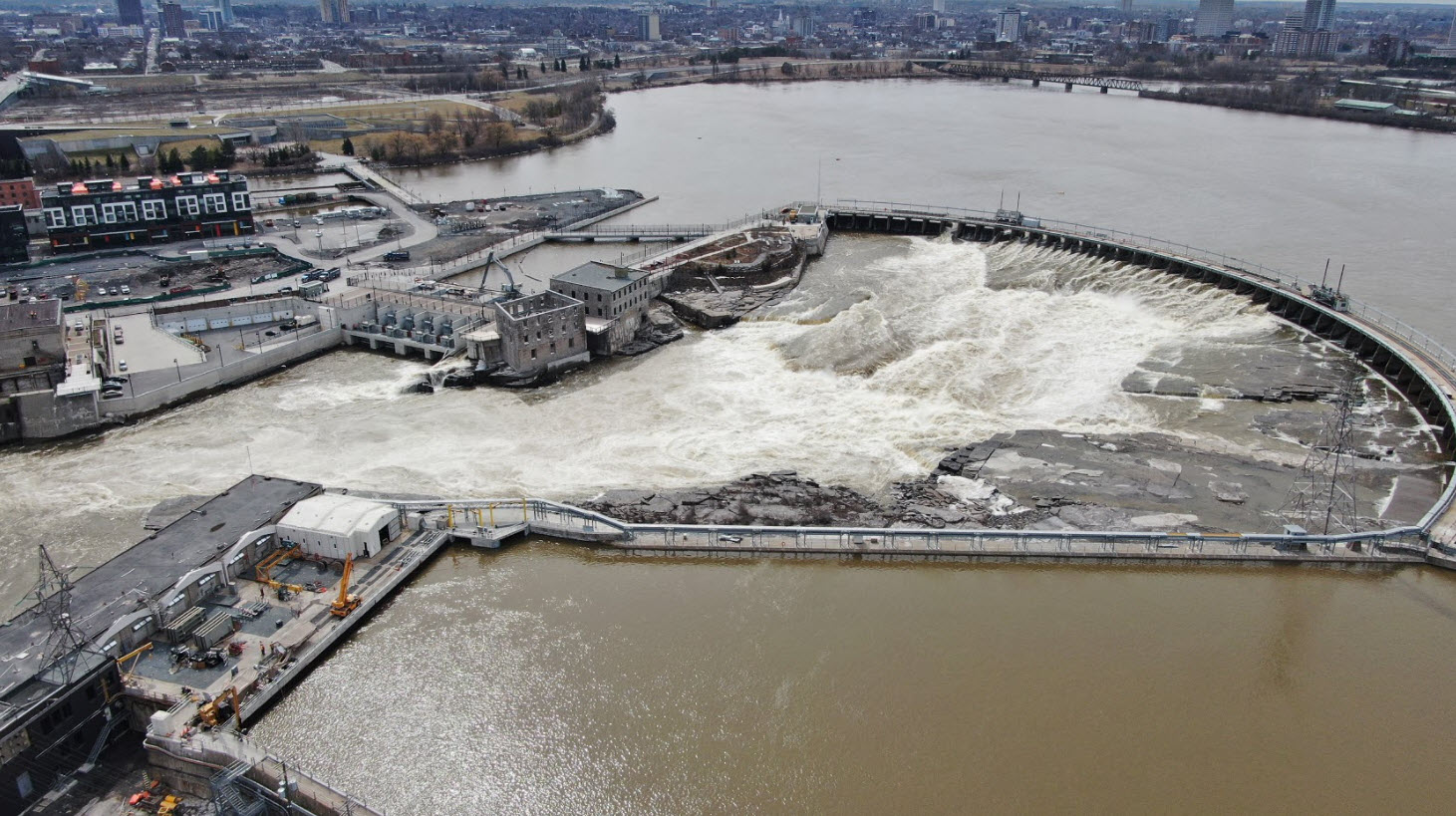Canada is a hydropower powerhouse! This renewable resource powers 60 per cent of our country’s electricity output. Put another way, it provides clean electricity to a staggering six out of ten Canadians across the country. As a water-rich nation with seven per cent of the world’s renewable freshwater, we are extremely fortunate to have an abundance of this natural resource.
And with Canada’s installed hydropower capacity soon exceeding 85,000 megawatts (MW), we are the fourth largest generator of hydroelectricity in the world, which contributes to a whopping 90 per cent of our country’s entire renewable energy production.
The potential of waterpower
Gilbert Bennett, President and CEO of Waterpower Canada, a national nonprofit trade association dedicated to representing the waterpower industry, says that hydropower is a key advantage to building a renewable future for Canada.
”We're going to be playing a major role in the transformation and the decarbonization of our economy,” says Bennett. “We've identified thousands of megawatts of potential generation that can be realized just by replacing the existing turbines and generators at existing plants across the country. Using existing dams, reservoirs and structures, while updating the technology inside the plants, is a cost-effective way to increase the efficiency of the plants and increase capacity on the grid.”
Waterpower Canada believes we could easily add another 15,000 MW of capacity just through upgrades and could even double our national production thanks to Canada’s favourable topography for hydropower development, untapped water resources, and pumped large-scale energy storage.
The best part? Hydropower is cost-competitive, helping to keep electricity rates low for customers. In fact, provinces with the highest hydropower installed capacity tend to have the lowest electricity rates.
Why hydropower matters
Hydropower isn't just about powering our lives, it's about protecting them too. It produces zero air pollution and has among the lowest greenhouse gas emissions of any energy source. Many hydroelectric facilities, especially run-of-the-river operations, have incredibly small environmental footprints. Plus, hydropower is reliable 24/7, cost-effective over the long run, and with proper maintenance, facilities can last for well over a century. As Waterpower Canada points out, the water used in the process isn't wasted, depleted or consumed – it's constantly replenished.
Our world is changing. Fossil fuels are out, and the clean energy revolution is in. Canada has pledged to have a zero-emissions electricity grid by 2035. We're already leading the G20 in clean power with over 80 per cent emissions-free electricity, but the pressure is on to meet that aggressive net-zero timeline. Waterpower Canada believes that hydro is perfect for filling that 20 per cent fossil fuel gap.
“Alternatives to fossil fuels like hydro, wind, solar, nuclear and hydrogen are going to be critical for us to achieve our net-zero aspirations and double the capacity of the electricity system,” says Bennett. “Hydro is the backbone of our country’s generating fleet and is the glue that holds the rest of the system together.”
As Canada’s dominant renewable energy supply, hydroelectricity does provide a constant and predictable source of electricity. It is seen by many as the renewable resource that stabilizes the grid. This can help balance intermittent sources of energy like wind and solar power.
Hydro Ottawa: Ottawa's own hydropower hub
Did you know that 'hydro' isn't just a buzzword for Canadians? That's why it's part of so many utility company names. Hydro Ottawa has a long and storied connection to hydropower. Built in 1891 and commissioned by E.H. Bronson during the lumber boom, Generating Station No.2 is one of Canada’s oldest generating stations still in operation today. Located on Victoria Island (just a hop, skip, and a jump from Parliament), it anchors our network of facilities built over the past century at Chaudière Falls on the Ottawa River.
The heritage-designated station, along with five others at Chaudière Falls (including the Ring Dam), has been providing clean, renewable electricity to the nation’s capital for more than 130 years.
When Generating Station No.5, our state-of-the-art hydropower facility, was energized in 2017, total generation output at Chaudière Falls increased to 84.6 megawatts (MW) and secured Hydro Ottawa as the largest municipally-owned producer of green power in Ontario.
At Hydro Ottawa, we're not just in the power business; we're in the business of building a better future. In total, we operate a fleet of 18 run-of-the-river hydroelectric facilities across Ontario, Quebec, and New York State. All together, our hydroelectric stations generate a massive 118 MW – which is enough clean power for 98,000 homes each year.
Experience Ottawa's hydro history
Want a close-up look at the incredible legacy of hydropower in Ottawa? Chaudière Falls is a public space that you can visit year-round, so plan a visit to our revitalized park space.
You'll enjoy stunning views of the Ottawa River from our viewing platforms, learn about the site's oldest buildings that survived the Great Fire of 1900, and get a closer look at the historic Ring Dam that was built in 1909 and still regulates water levels on the river today.
Conveniently located in the heart of downtown Ottawa, it's the perfect spot to see where Ottawa's past and future meet.
To listen to our full interview with Waterpower Canada’s Gilbert Bennett, tune into the ThinkEnergy podcast here.




